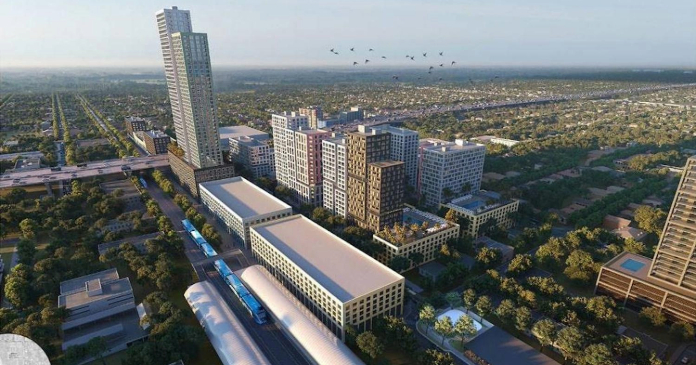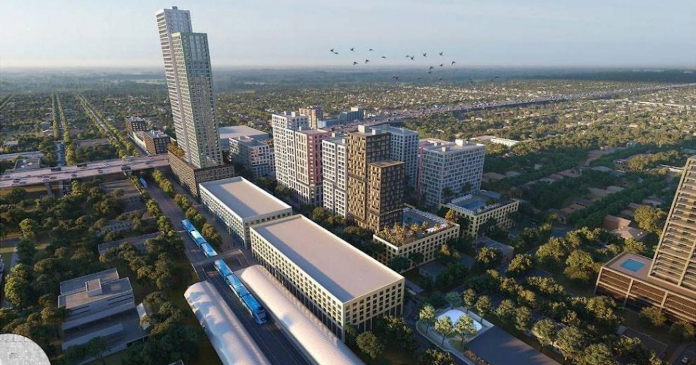Transforming Little River: The Historic Little River District Project
Introduction
The Little River District is set to bring a transformative wave of change to Miami’s underserved neighborhoods of Little River and Little Haiti. With the recent approval from the Miami-Dade County Commission, this ambitious project will not only reshape the urban landscape but also address the pressing need for affordable and workforce housing in the region.
Overview of the Project
This $3 billion mixed-use development spans an impressive 63 acres and is designed to provide:
- 5,700+ affordable and workforce housing units
- Major retail spaces including big-box stores and local businesses
- A brand-new Tri-Rail train station
- Green public spaces aimed at enhancing community life

The transformative 63-acre transit-oriented project promotes sustainable living while adding essential amenities to the community.
Key Features
Housing Units
The Little River District includes a diverse range of housing options:
- 2,284 affordable housing units aimed at households earning an average of 60% of the Area Median Income (AMI)
- 1,398 workforce rental units targeting up to 120% AMI
- 2,048 potential condominium units for buyers up to 140% AMI with significant subsidies
Note: Current residents of existing public housing have guaranteed rights to return to the new units without increased rent.
Amenities and Community Benefits
- Retail Space: Over 370,000 square feet dedicated to retail, including commitments from major chains like Home Depot and BJs.
- Public Green Spaces: Roughly 250,000 square feet of green areas, promoting a sustainable, pedestrian-friendly environment with improved walkways and bike paths.
- Transportation: Introduction of the new Tri-Rail train station, bolstering Miami’s public transit with a $35 million investment.
Planned Residential Amenities
Residents can expect an array of modern facilities, including:
- Swimming pool and fitness center
- Computer lab and free Wi-Fi
- Outdoor recreation spaces for children
- Gated parking and security features
Economic Impact
The project is poised to create about 3,840 jobs during construction and an additional 518 permanent positions afterward. A significant focus on local hiring will favor low-income residents, enhancing economic opportunities for the current community.
Financial Upside
The Little River District will contribute approximately $9.5 billion in revenue, the largest revenue-sharing agreement in Miami-Dade’s history. This funding will play a crucial role in addressing the ongoing affordable housing crisis and supporting community development initiatives.
Development Timeline
- Construction Start: Expected in 2026
- Estimated Completion: The project will span eight years, aiming to become a model for large-scale, community-driven redevelopment.
A Collaborative Effort
This groundbreaking initiative is the result of collaborative efforts among various stakeholders, including:
- SG Holdings (composed of the Swerdlow Group, SJM Partners, and Alben Duffie)
- Miami-Dade County’s Department of Housing and Community Development
- U.S. Department of Housing and Urban Development
Key local officials, such as Mayor Daniella Levine Cava and County Commissioner Keon Hardemon, have actively supported the project, emphasizing the significance of public-private partnerships in driving meaningful change.
Quotes from Leadership
Michael Swerdlow, CEO of Swerdlow Group, stated:
"This approval is a major milestone in addressing Miami’s critical need for affordable and workforce housing. The Little River District will deliver a community that prioritizes accessibility and economic opportunity."
Conclusion
The Little River District project is more than a housing initiative; it represents a comprehensive approach to community revitalization through affordable living, accessible transit, and economic growth. As construction gears up, the eyes of Miami will be on this dynamic development, which aims to serve as a beacon of sustainable urban living.
For further insights into public-private partnerships and affordable housing initiatives, check resources from organizations like HUD and Miami-Dade County.
This project illustrates the remarkable possibilities when community needs align with innovative urban planning, ensuring a brighter future for the neighborhoods of Little River and Little Haiti.


